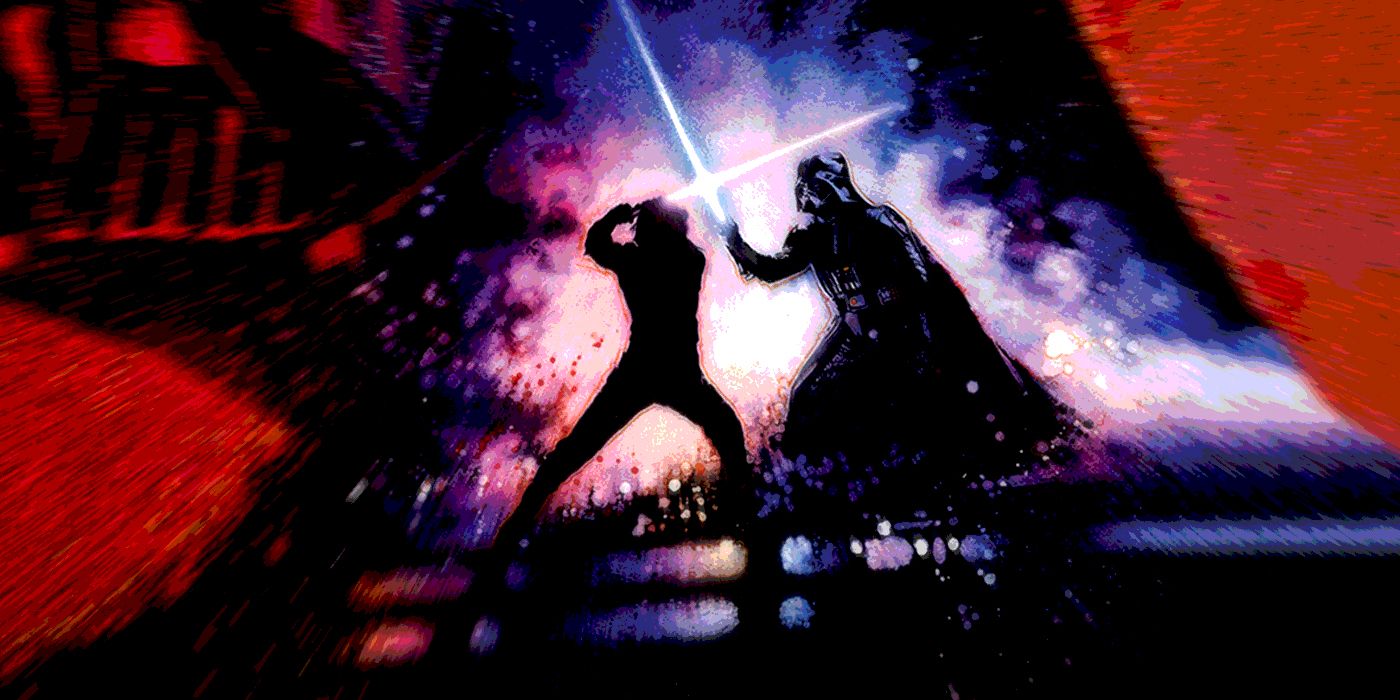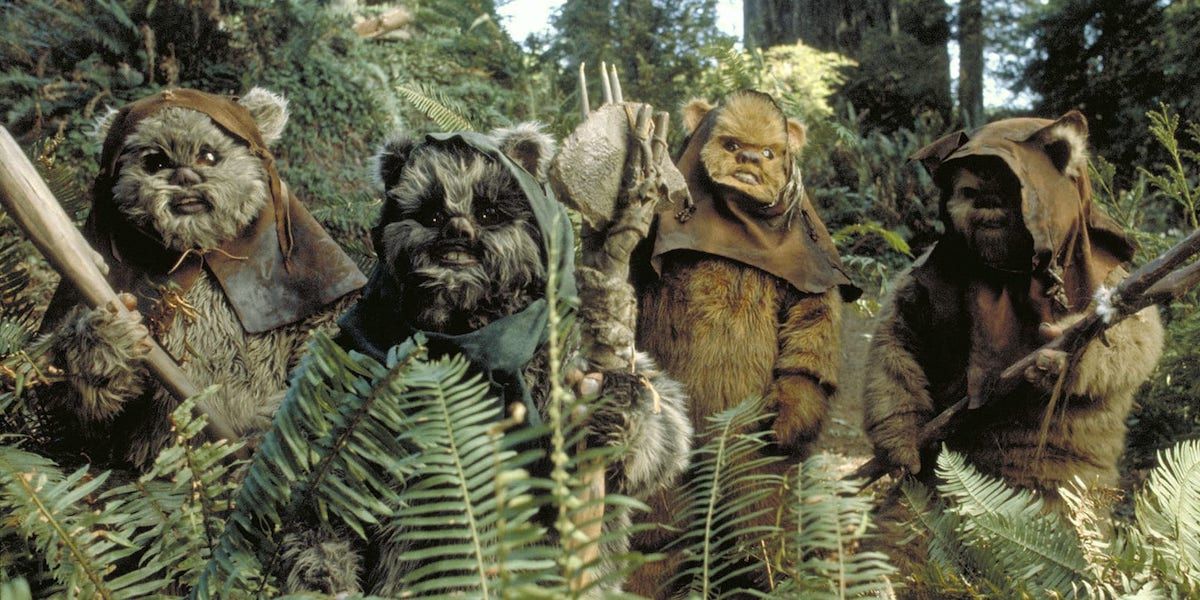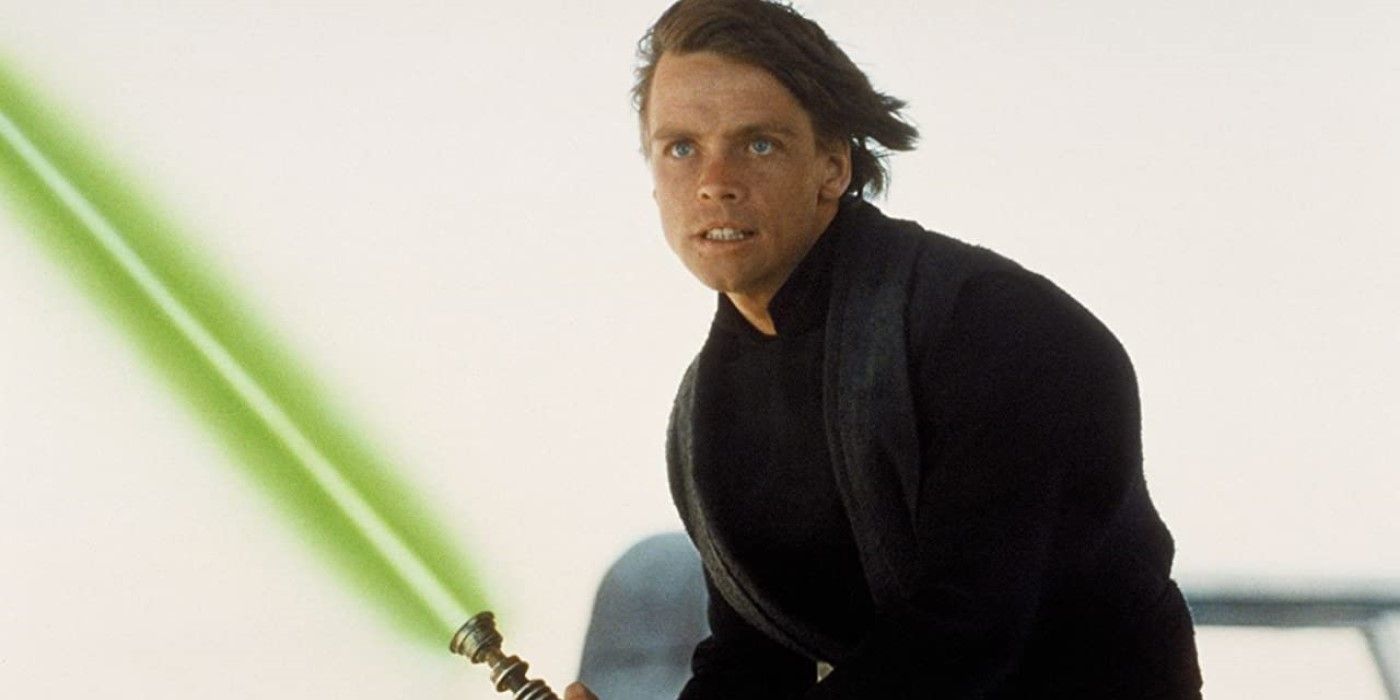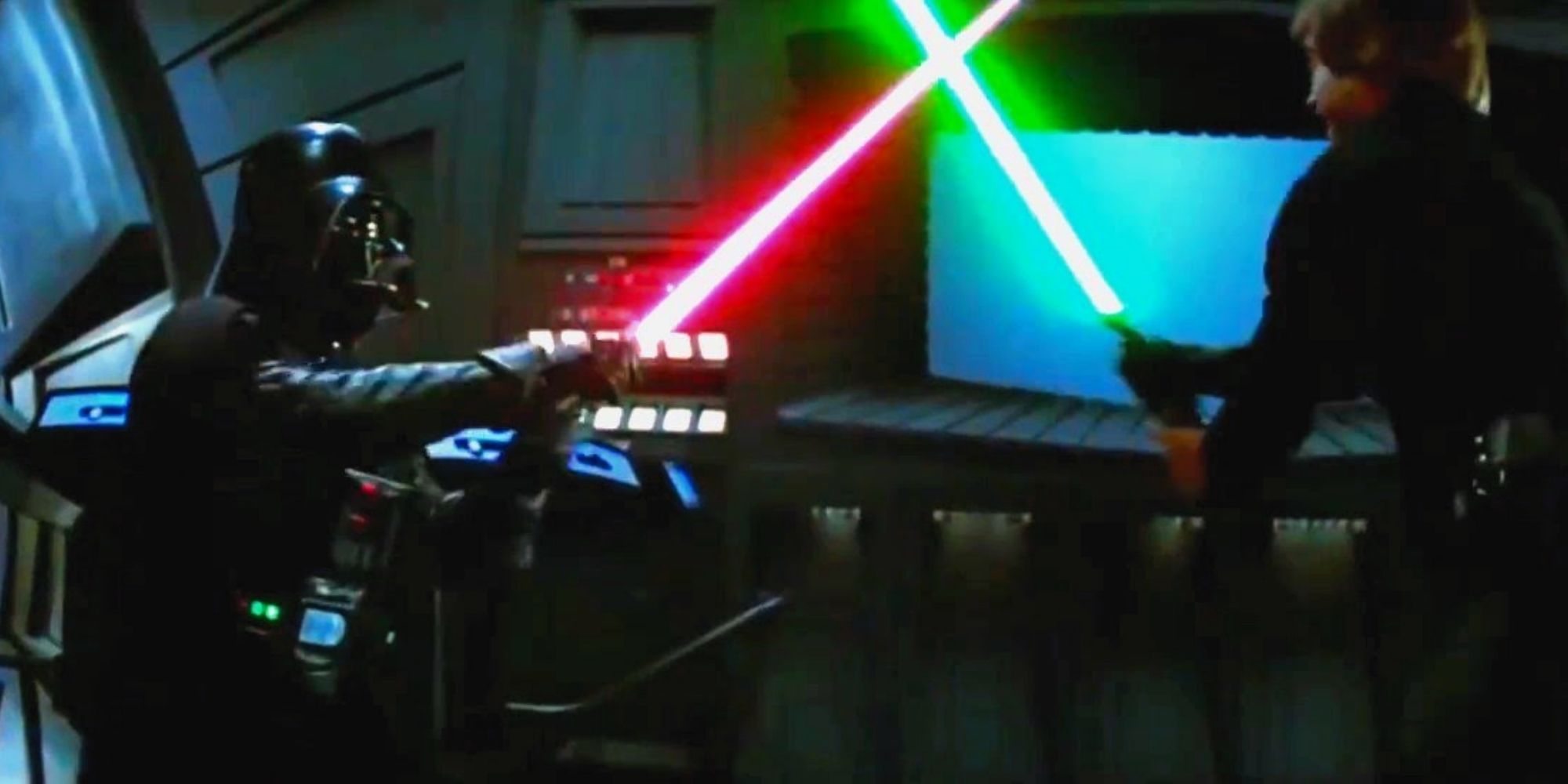Star Wars: Episode IV -- A New Hope launched a world-wide phenomenon that still impacts the entertainment world today. Star Wars: Episode V -- The Empire Strikes Back is rightly heralded as the most Oscar-worthy of the Star Wars films. But as for being the best film out of the original trilogy? Well, in the opinion of yours truly, that honor goes to Star Wars: Episode VI -- Return of the Jedi. Was it as innovative as A New Hope? Nope. Was it a cinematic masterpiece like The Empire Strikes Back? Not really. But for real stakes, revelations, and pure enjoyment (and the great Admiral Ackbar), Return of the Jedi bests its original trilogy kin.
To refresh your memory, Jedi picks up on Tatooine, with R2-D2 (Kenny Baker) and C-3P0 (Anthony Daniels) gaining entrance into Jabba the Hutt's palace. R2 plays a holographic message from Luke (Mark Hamill) requesting that Han Solo (Harrison Ford) be freed from his carbonite cell, warning of consequences if he Jabba doesn't comply. He does not, which leads to Luke and the gang freeing Han and destroying Jabba's sail barge in the process. Luke returns to Dagobah to complete his training, only to be told there's no more training required. Oh, and Yoda also kicks in that Leia (Carrie Fisher) is his sister before dying and going to Muppet heaven. Meanwhile, the Rebels have gathered to plan an attack on a new threat: Death Star 2.0. They split into two groups, one heading to the forest moon of Endor to take down the shield generator protecting the weapon, and the second group ready to take out the Death Star once the shields are down. Things happen, Luke and Vader (James Earl Jones) duel as the Emperor (Ian McDiarmid) looks on, short and furry Ewoks help take down the generator, Death Star 2.0 goes boom, bring on the party.
'Return of the Jedi' Is Imaginative and Fun
Jedi finds George Lucas -- who produced, co-wrote, and was overall a bit more hands-on than he was with Empire -- deftly using his creativity throughout the film. Innovative new vehicles seem to pop up every few minutes: Jabba's sail barge, speeder bikes, B-Wing fighters, AT-STs, Imperial shuttles, and our first glimpse of the fleet of Rebel ships. I find the latter to be the most interesting, as they're soft and rounded mother ships that stand in direct contrast with the hardened and cold Imperial destroyers. Meanwhile, the speeder bikes provide one of the great action sequences in the film as they race through the forests of Endor. New, unique creatures enter the Star Wars universe for the first time, including a rancor, the sarlacc, Ewoks, fan favorite Max Rebo, and Jabba the Hutt himself, a large slug-like creature covered in his own excesses, lauded for heading a far-reaching criminal empire. Jabba is nothing like we would have expected him to be, but to me, he's perfect -- a visual representation of the ugliness of his vocation. Jedi also brings back the fun that took a back seat in Empire Strikes Back. Han oozing charm and confidence as he tries in vain to sweet talk Jabba out of killing our group of heroes is a funny return to the charming scoundrel we love. C-3P0's awkward handling of the revelation that the Ewoks see him as a god is delightfully comic, a pretentious droid having to come to terms with unyielding adoration. The endearingly sweet moment where Leia meets Wicket (Warwick Davis) for the first time is amusing.
'Return of the Jedi' Has Great Battles
Another strength of the film is in its battle scenes, three of which I would deem among the best throughout the franchise... and they happen concurrently. Luke's lightsaber battle with Darth Vader takes full advantage of its space, with the two being equally proficient with their weapons for the first time. It's a gripping sequence with real stakes: Luke's fall into the dark side vs the redemption of Darth Vader's soul. The fight on the forest moon is brilliant, another testament to Lucas' creativity. The various, primitive ways that the Ewoks use to take out the Imperial forces -- rolling logs, lassos, and sheer numbers in an attack -- paired with the determination of the Rebel party prove to be most effective. And, again, the stakes are high, with the entire Rebel fleet bearing down on the new Death Star.
All of this leads to arguablly the best battle scene of the film, with the Rebels and the Empire going head-to-head. The Empire knew they were coming and prepared for it, and as the Rebel ships approached, the full wrath of the Imperial forces blitzed them. The dogfighting sequences are the best of the trilogy, with dips, trips, and angles that hadn't been utilized before. The larger Rebel ships heading into the fray to confront the Imperial Star Destroyers head-on (and avoid the fully operational Death Star) raises the tension to unimaginable heights. It's an adrenaline-driving scene that happens to contain what I have long claimed to be the greatest shot in the history of the franchise, the visage of the oncoming blitzkrieg of TIE fighters flying straight at the screen as Lando (Billy Dee Williams) realizes the shields are still up.
'Return of the Jedi' Brings Redemption and Villainy
Throughout the entirety of the Skywalker saga, the theme of the underdog rising up against oppressive forces -- the idea of David vs Goliath -- is repeated time and again. The people of Naboo against the Trade Federation, or the plucky Rebel fighters against the OG Death Star. Jedi keeps the recurring theme alive in multiple ways. Leia, for example, is forced to wear a golden bikini while chained to Jabba. It's degradation at its worst; the leader of the Rebel forces made to be subservient to a crime lord. Yet she rises up at the opportunity and uses the humiliating chain to end her captor's life. The Ewoks, a primitive tribe of small, furry beings, use their knowledge of their surroundings to bring down the advanced forces of the Empire. That in itself has real-world parallels: the Vietnamese pushing back against the Americans. The Afghanis repelling the Soviets. Ukrainians holding their own against the Russians. Everybody loves an underdog, and Jedi has many.
Jedi neatly ties up the saga, bringing redemptive arcs to nearly everyone involved. Lando is given the opportunity to redeem himself in the eyes of the others after his actions in The Empire Strikes Back, helping in the rescue of Han Solo and delivering the second killing strike against Death Star 2.0. Luke redeems himself, proving that he was right all along about his father still having good in him. Speaking of which, Darth Vader is wholly redeemed, turning on the Emperor and reverting to Anakin Skywalker before his dying breath. And even long-time Rebel fighter Wedge Antilles (Denis Lawson) delivers the first killing strike on Death Star 2.0, finally rewarded after having to bail on the Battle of Yavin.
Who wasn't redeemed? Emperor Palpatine, the final argument for the greatness of Jedi. We'd glimpsed the Emperor once before as a hologram, but to see and experience the formidable leader of the Empire actually on screen is amazing. It's Ian McDiarmid's first appearance as the villain, and he absolutely owns it. His hissing speech, paired with a range that sees it go from enticing temptation to utter contempt, is utterly commanding. His facial expressions with the vacant smile and outright rage paint a vivid picture of the vileness of the man. What McDiarmid does with the Emperor that makes the film work so well is in getting Palpatine's smug hubris to come across whenever he appears. His is the real villain behind the villain, the one pulling the strings, and ultimately it is his presence that, to yours truly, elevates Return of the Jedi to the top of the original trilogy.




